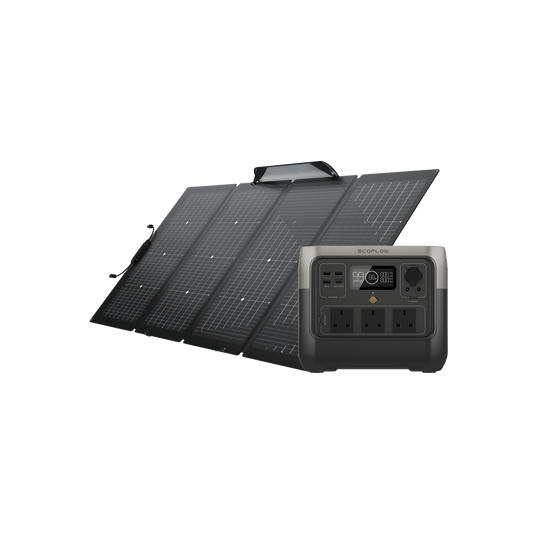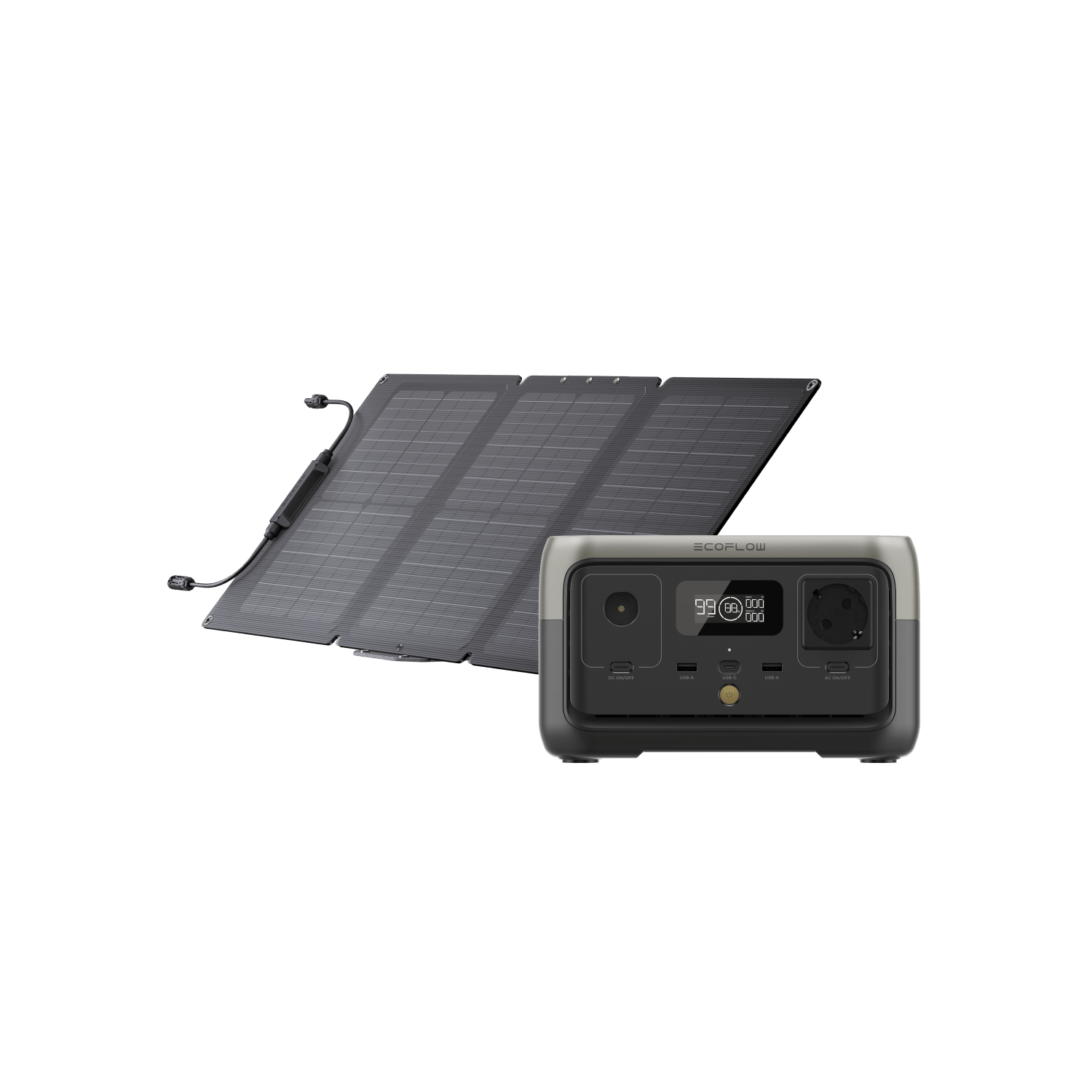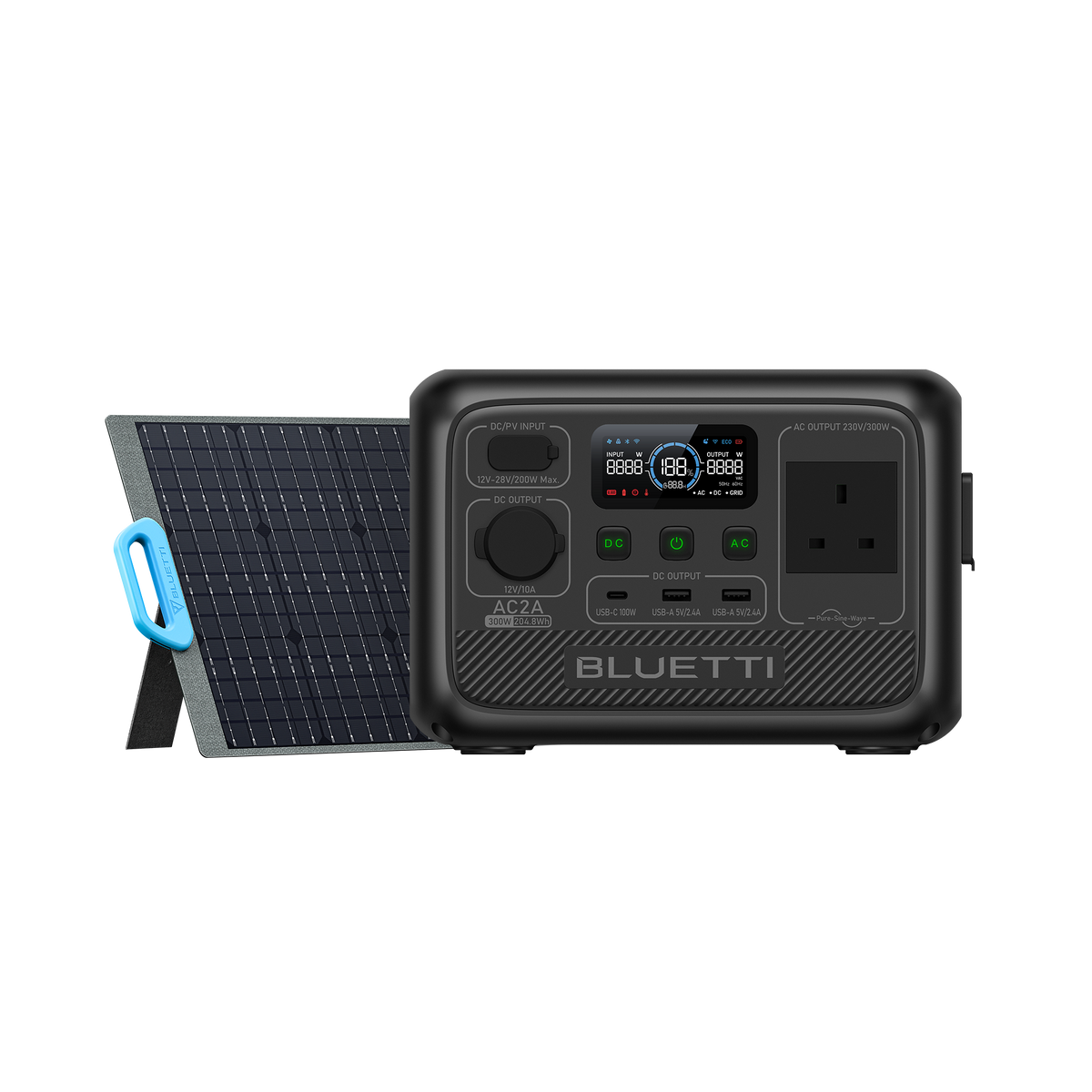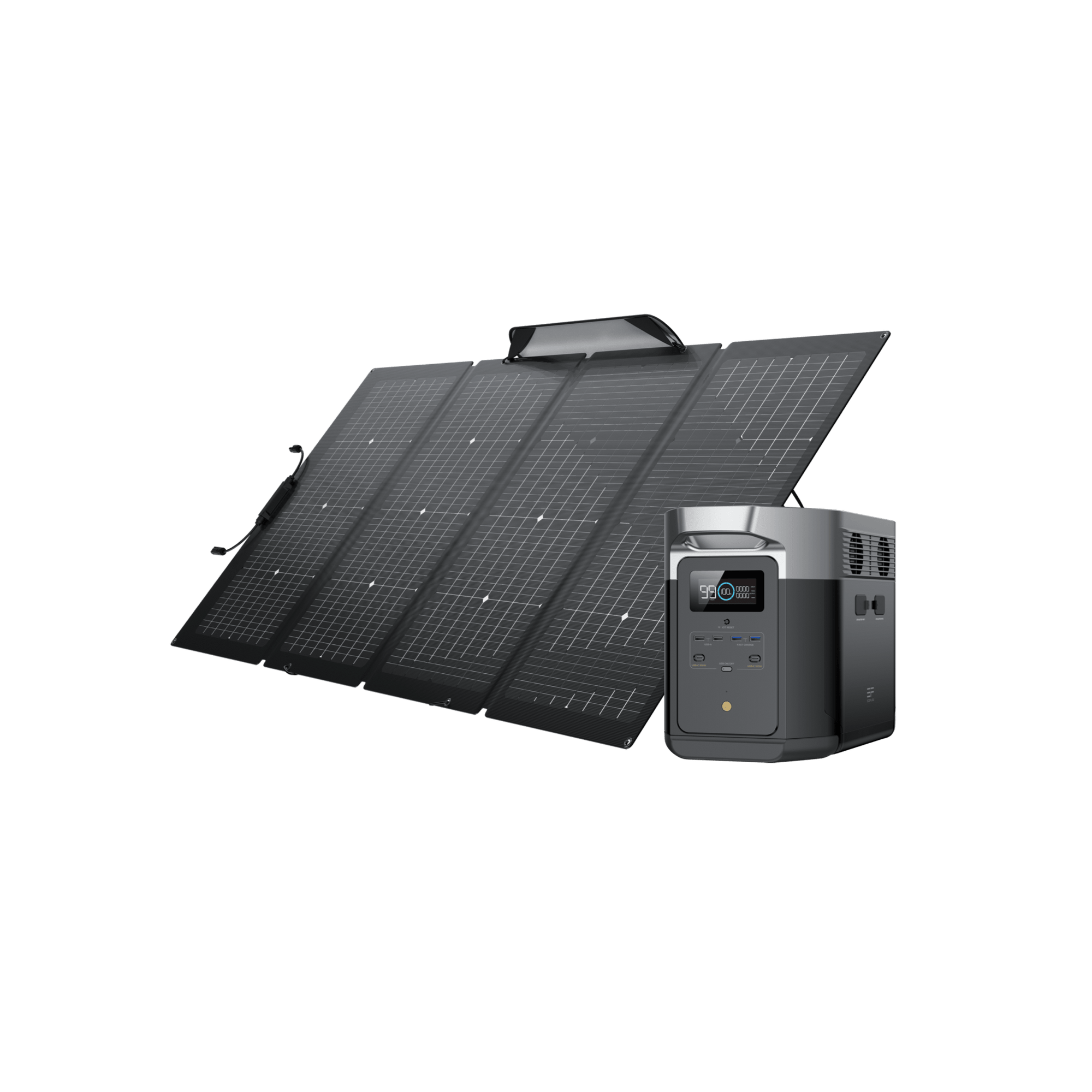Embarking on the journey into solar energy is an exciting venture, and understanding the basics is key, especially for beginners. In this guide, we illuminate the world of solar generators, with a particular focus on power packs equipped with solar panels. We’ll explore why portable solar generators serve as an ideal starting point for solar novices, shedding light on solar generators and the ease they offer before going to a full solar installation.
Defining ‘Solar Generator’: Power Packs With Solar Panels
A solar generator refers to a compact power solution equipped with solar panels to harness energy from the sun. Unlike traditional generators relying on fuel, these eco-friendly devices provide a renewable energy source, making them a popular choice for those exploring into the world of solar power.
This post contains affiliate links. Thank you for supporting BeamBound and helping us continue creating great content—at no extra cost to you!
Why Portable Solar Generators Are Ideal For Solar Novices
The transition to solar energy can be overwhelming, making portable solar generators an excellent starting point. Their user-friendly nature and versatility make them suitable for beginners, allowing users to experiment with solar power without the complexity of a full-scale installation.
The Convenience of Starting With a Portable System Before a Full Solar Installation
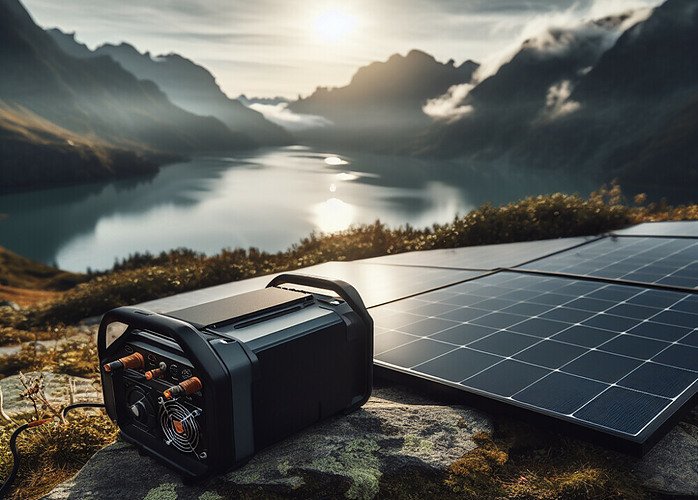
Beginning with a portable solar generator provides users with a practical understanding of solar energy systems. This hands-on experience can be invaluable when deciding to expand to a larger, permanent solar installation for a home or business.
Share your thoughts, experiences, and insights with us. Whether you’re a seasoned solar enthusiast or a beginner, contribute to our community’s understanding of the transformative potential of solar energy.
Basic components of a solar generator
Exsporing the world of solar generators requires a foundational understanding of their essential components. Before exploring the market, it is crucial to familiarize yourself with the fundamental elements that constitute a solar generator. These components work in harmony to harness, store, and deliver solar energy efficiently.
Here’s a detailed exploration of each key component:
Solar Panels
Solar panels, the core of a solar generator, capture sunlight and convert it into electrical energy through the photovoltaic effect. Their efficiency varies, and the size determines the amount of sunlight they can collect.
Charge Controller
A crucial component, the charge controller, regulates energy flow from the solar panels to the battery. Its primary function is to prevent overcharging, safeguarding the battery and enhancing overall system performance. Modern solar generators often feature intelligent controllers for optimized charging efficiency.
Inverter
Responsible for converting direct current (DC) electricity from solar panels into alternating current (AC), the inverter ensures compatibility with various appliances and electronics used in homes and most devices.
Battery
The battery acts as the storage hub, storing excess energy generated during sunlight periods for later use, such as during the night or on cloudy days. Battery capacity, measured in watt-hours (Wh), influences the solar generator’s power supply over a specific period.
Considering Maximum Output
When judging solar generators, assess their maximum output capacity, usually measured in watts or kilowatts. This value represents the highest power supply at a given moment. Ensure it aligns with your needs, considering factors like sunlight availability, battery size, and system efficiency for practical usability.
Realistic Expectations: The Capabilities and Limitations of Solar Generators
While they offer numerous benefits, it’s crucial to manage expectations. Consider factors such as weather conditions and environmental variables, as they significantly impact the efficiency of solar generators. Understanding these limitations ensures a more realistic approach to solar energy usage.
Distinguishing Between Power Needs For Emergencies, Camping, and Household Usage
Identifying specific power requirements is essential when choosing a solar generator. Whether it’s for emergencies, camping trips, or regular household use, understanding your needs helps determine the size and features required for optimal performance.
Recognizing the Restrictions in Powering Appliances and Heavy-Duty Electronics
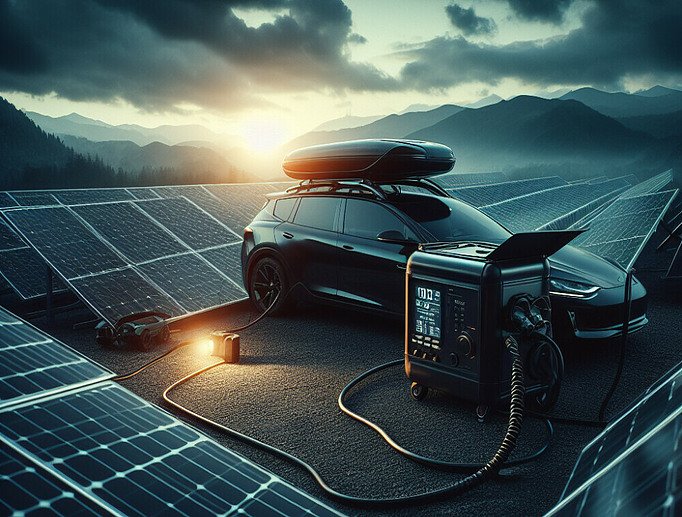
Solar generators may not be suitable for powering high-energy appliances or heavy-duty electronics. It’s vital to recognize these limitations and adjust expectations accordingly, ensuring a more practical and efficient use of solar power.
Adjusting Lifestyle to Align With the Output of Small Solar Generators
Adapting your lifestyle to align with the output of small solar generators is a key aspect of successful integration. Being mindful of energy consumption and making conscious choices can enhance the effectiveness of your solar power setup.
Choosing Right: A Guide to Personal Power Needs
Assessing and calculating individual power requirements is a crucial step in selecting the right solar generator. Consider your specific needs and compare DIY configurations to off-the-shelf options to find the most suitable solution for your energy demands.
Here are examples of energy outputs for common household appliances, typically measured in watts:
1. LED Light Bulb: 8-15 watts
2. Refrigerator: 100-800 watts (varies based on size and efficiency)
3. Television: 30-300 watts (depending on size and type)
4. Laptop: 30-100 watts
5. Microwave: 700-1,200 watts
6. Coffee Maker: 600-1,200 watts
7. Hair Dryer: 800-1,800 watts
8. Washing Machine: 350-500 watts
9. Dishwasher: 1,200-2,400 watts
10. Air Conditioner: 1,000-5,000 watts (depends on capacity and efficiency)
11. Tumble dryer typically consumes around 1,800 to 5,000 watts of power,
Selecting Your Solar Generator: A Guide to Key Features
Selecting the right solar generator brand involves careful consideration of several key features to ensure that the chosen model aligns with your specific needs and preferences. Here’s an expanded look at these crucial features:
1. Battery Life
– Assess the solar generator’s battery capacity, measured in watt-hours (Wh). A larger capacity generally means more stored energy.
– Consider the type of battery used (e.g., lithium-ion) for its efficiency, lifespan, and weight.
– Examine charging times and whether the generator supports multiple charging methods, such as solar, AC power, or car charging.
2. Portability
– Evaluate the weight and dimensions of the solar generator, especially if portability is a priority.
– Look for features like built-in handles or wheels that enhance ease of transportation.
– Consider whether the generator can be easily carried for outdoor activities, such as camping or hiking.
3. Ease of Use
– Examine the user interface and controls to ensure they are intuitive and user-friendly.
– Check if the solar generator provides helpful displays, indicating battery levels, charging status, and power usage.
– Look for generators with convenient features like USB ports, AC outlets, and DC outputs for versatile device compatibility.
4. Charging Options
– Consider the flexibility of charging options the solar generator offers. This might include solar panels, traditional AC outlets, car chargers, or a combination of these.
– Look for generators with a variety of input ports to accommodate different charging sources simultaneously.
5. Durability and Build Quality
– Assess the overall build quality and durability of the solar generator, especially if it will be used in various outdoor conditions.
– Check if the generator has features like water resistance or rugged casing to withstand environmental elements.
6. Inverter Capacity
– Evaluate the inverter’s capacity to ensure it can handle the power needs of your devices and appliances.
– Look for models with pure sine wave inverters, as they provide a clean and stable power output suitable for sensitive electronics.
7. Expandability
– Consider whether the solar generator allows for expandability, such as the ability to connect additional solar panels or link multiple units for increased power output.
8. Warranty and Customer Support
– Look into the warranty offered by the manufacturer to ensure a certain level of protection against defects.
– Check customer reviews and the reputation of the brand’s customer support to gauge their responsiveness and assistance in case of issues.
By thoroughly examining these features, you can make a well-informed decision when selecting a brand that best suits your energy needs, lifestyle, and expectations.
Conclusion
Embarking on the solar energy journey through solar generators offers a beginner-friendly gateway to sustainable power. By understanding the basics, managing expectations, and choosing the right solar generator based on individual needs, users can harness the power of the sun to meet their energy requirements efficiently, adding self-sufficiency to their power needs.
Recently embraced solar energy or considering it? Share challenges and successes on your journey to a sustainable power solution. Your insights contribute to our community’s discussion on renewable energy.




